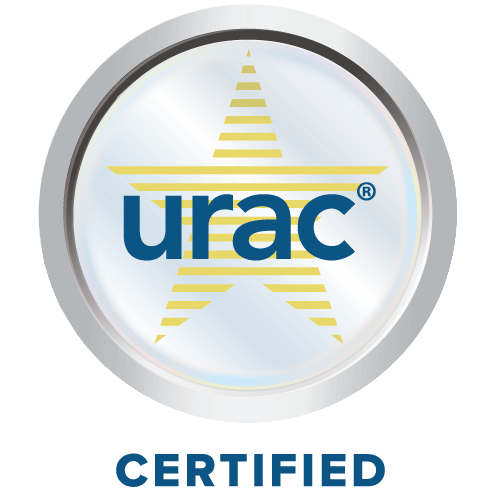Exercises to help prevent falls
Images

I Would Like to Learn About:
Description
If you have a medical problem or you are an older adult, you may be at risk of falling or tripping. This can result in broken bones or even more serious injuries.
Exercising can help prevent falls because it can:
- Make your muscles stronger and more flexible
- Improve your balance
- Increase how long you can be active
You can do the following exercises anytime and almost anywhere. As you get stronger, try to hold each position longer or add light weights to your ankles. This will increase how effective the exercise is.
Try to do aerobic exercise 150 minutes a week. Perform muscle strengthening exercises 2 or more days a week. Start off slowly and check with your health care provider to make sure you are doing the right type of exercises for you. You may want to exercise on your own or join a group.
When you exercise, always make sure you breathe slowly and easily. Do not hold your breath.
Balance Exercises
You can do some balance exercises during everyday activities.
- While waiting in line at the store, try balancing on one foot.
- Try sitting down and standing up without using your hands.
Toe Stand
To make your calves and ankle muscles stronger:
- Hold on to a solid support for balance, like the back of a chair.
- Stand with your back straight and slightly bend both knees.
- Push up onto your tiptoes as high as possible.
- Slowly lower your heels to the floor.
- Repeat 10 to 15 times.
Knee Curl
To make your buttocks and lower back muscles stronger:
- Hold on to a solid support for balance, like the back of a chair.
- Stand with your back straight, feet shoulder width apart, and slightly bend both knees.
- Lift one leg straight back behind you, then bend your knee and bring your heel toward your buttock.
- Slowly lower your leg back to a standing position.
- Repeat 10 to 15 times with each leg.
Leg Extension
To make your thigh muscles stronger and possibly decrease knee pain:
- Sit in a straight-back chair with your feet on the floor.
- Straighten one leg out in front of you as much as possible.
- Slowly lower your leg back down.
- Repeat 10 to 15 times with each leg.
Stretching the Back of Your Leg
To make it easier for you to move around:
- Sit in a straight-back chair.
- Put one foot on a low stool in front of you.
- Straighten your leg that is on the stool and reach your hand toward this foot.
- Hold for 10 to 20 seconds. Then sit back up.
- Repeat 5 times with each leg.
Other Activities
Walking is a great way to improve your strength, balance, and endurance.
- Use a walking stick or walker as needed for support.
- As you get stronger, try walking on uneven ground, such as sand or gravel.
Tai chi is a good exercise for healthy adults to help develop balance.
Simple movements and exercises in a swimming pool can help improve balance and build strength.
When to Call the Doctor
If you have pain, dizziness, or problems breathing during or after any exercise, stop. Talk with your physical therapist, nurse, or provider about what you are experiencing and before you continue.
References
National Institute on Aging website. Four types of exercise can improve your health and physical ability. www.nia.nih.gov/health/exercise-and-physical-activity/four-types-exercise-can-improve-your-health-and-physical. Updated January 29, 2021. Accessed April 30, 2024.
National Institute on Aging website. Falls and fractures in older adults: causes and prevention. www.nia.nih.gov/health/falls-and-falls-prevention/falls-and-fractures-older-adults-causes-and-prevention. Updated September 12, 2022. Accessed April 14, 2024.
Sherrington C, Fairhall NJ, Wallbank GK, et al. Exercise for preventing falls in older people living in the community. Cochrane Database Syst Rev. 2019;1(1):CD012424. PMID: 30703272 pubmed.ncbi.nlm.nih.gov/30703272/.
US Department of Health and Human Services website. Physical Activity Guidelines for Americans 2nd edition. health.gov/sites/default/files/2019-09/Physical_Activity_Guidelines_2nd_edition.pdf. Updated 2018. Accessed June 17, 2024.
BACK TO TOPReview Date: 4/18/2024
Reviewed By: Linda J. Vorvick, MD, Clinical Professor, Department of Family Medicine, UW Medicine, School of Medicine, University of Washington, Seattle, WA. Also reviewed by David C. Dugdale, MD, Medical Director, Brenda Conaway, Editorial Director, and the A.D.A.M. Editorial team.

Health Content Provider
06/01/2025
|
A.D.A.M., Inc. is accredited by URAC, for Health Content Provider (www.urac.org). URAC's accreditation program is an independent audit to verify that A.D.A.M. follows rigorous standards of quality and accountability. A.D.A.M. is among the first to achieve this important distinction for online health information and services. Learn more about A.D.A.M.'s editorial policy, editorial process and privacy policy. A.D.A.M. is also a founding member of Hi-Ethics. This site complied with the HONcode standard for trustworthy health information from 1995 to 2022, after which HON (Health On the Net, a not-for-profit organization that promoted transparent and reliable health information online) was discontinued. |
The information provided herein should not be used during any medical emergency or for the diagnosis or treatment of any medical condition. A licensed medical professional should be consulted for diagnosis and treatment of any and all medical conditions. Links to other sites are provided for information only -- they do not constitute endorsements of those other sites. © 1997- 2025 A.D.A.M., a business unit of Ebix, Inc. Any duplication or distribution of the information contained herein is strictly prohibited.
